Excerpts from Jim Conrad's
Naturalist Newsletter
from the May 12, 2013 Newsletter issued from the Frio Canyon Nature Education Center in northern Uvalde County, southwestern Texas, on the southern border of the Edwards Plateau; elevation ~1750m (~5750 ft); N29.62°, W99.86°; USA
HILL COUNTRY YELLOW BUCKEYE
The cabin I live in is in extreme northern Uvalde County, Texas. In fact, I'm so far northward that the northern county line runs through the laundry shed. About five steps north from my door brings me into Real County. That's significant because this week I was biking in Real County a mile or so north of the county line when the small tree turned up, whose flowers and leaves are shown below:
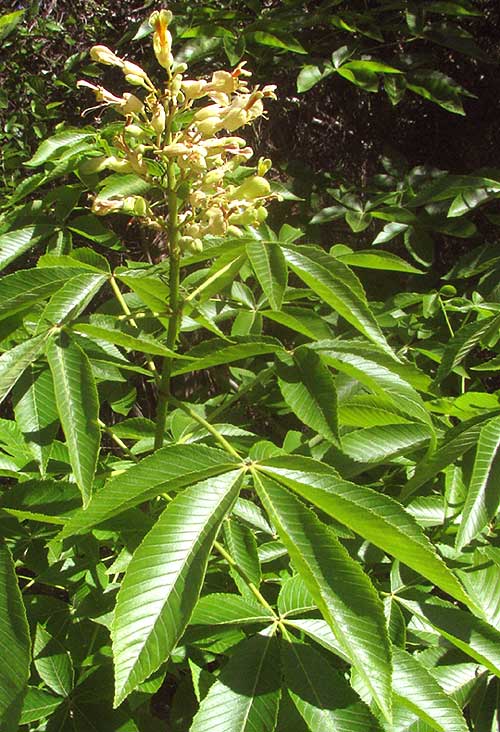
With those large, digitately compound leaves (leaflets diverging from the petiole top like digits on the hand) and large, erect panicle of yellowish flowers, you probably recognize this as a buckeye. At first I thought it was the Ohio Buckeye, but later I learned that it's the Hill Country Yellow Buckeye, AESCULUS PAVIA var. FLAVESCENS. Here we're just a few miles from both the southern and western extremes of the Yellow Buckeye's distribution.
Individual plants living at the extremes of their species' distribution area often diverge a little in various ways from "average" individuals at the population's center. That makes them of particular importance when we think in terms of safeguarding a species' genetic diversity.
Thirteen to nineteen buckeye species are recognized, of which six or so occur in North America. The species are fairly similar and are best distinguished by their flowers and fruits. A close-up of flowers from our tree is shown below:
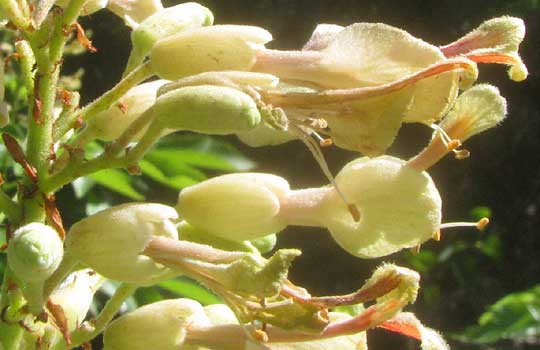
A close-up from below a flower showing better that blossoms bear four petals and that their stamens are of various lengths is seen below:
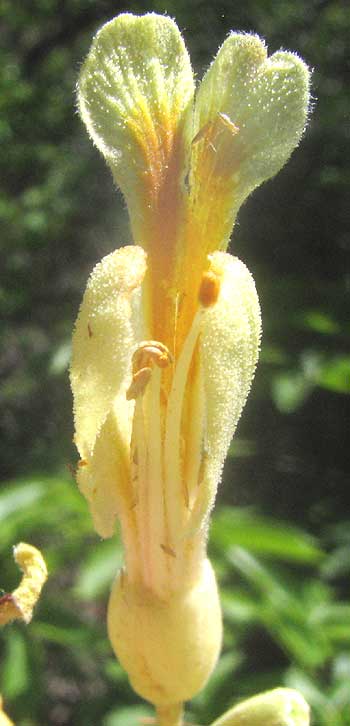
In our April 7th Newsletter we looked at the pink-flowered Mexican Buckeye, which isn't a "real" buckeye since it's in a different genus, though in the Buckeye Family. You can see how different our Yellow Buckeye is from the Mexican one at http://www.backyardnature.net/n/w/ungnadia.htm.
Buckeyes didn't occur in the part of western Kentucky where I grew up, so one day when I was a kid and a friend of the family traveled north into Indiana where buckeyes did grow, they returned with baskets filled with buckeye fruits. My mother was lucky enough to get a couple and she gave one to me, saying that if I carried it in my pocket I'd never get arthritis. I actually did carry it for a year or two.
from the November 3, 2013 Newsletter issued from the Frio Canyon Nature Education Center in the valley of the Dry Frio River in northern Uvalde County, southwestern Texas, on the southern border of the Edwards Plateau; elevation ~1750m (~5750 ft); N29.62°, W99.86°; USA
BUCKEYES DROPPING
Nowadays, despite our having had no frost so far, our area's buckeye trees are leafless. However, at the tips of some branches you see very eye-catching, spherical, splitting-open, golf-ball-size fruits, as shown below:
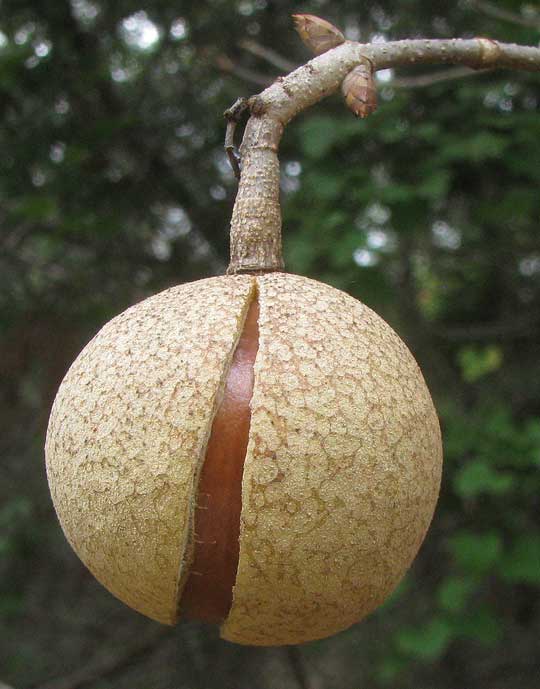
In that image, notice the two brown, scaly lateral buds arising opposite one another on the twig above the fruit. If you handle a fruit, the husks easily fall away, revealing brown, shiny seeds, the buckeye fruits that as a kid I kept in my pocket to ward off rheumatism. Below, you can see two buckeyes, the top one displaying its "buck's eye":
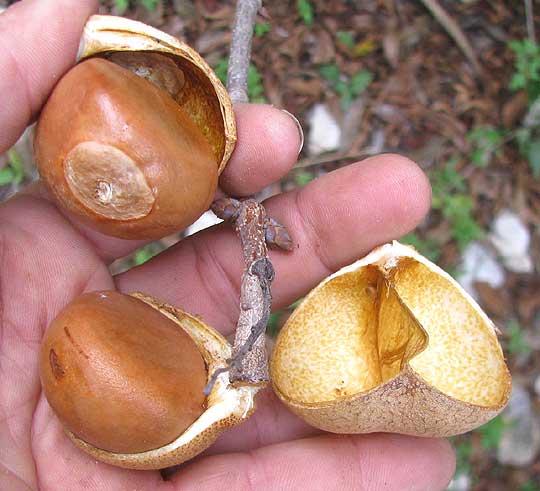
Native Americans slow-roasted, peeled and mashed buckeye fruits to get a nutritious meal for making porridge. The roasting was important because otherwise the fruit and other parts of the tree are toxic, containing saponins. Still, traditionally minute doses of the seed were used internally in the treatment of coughs and asthma, and externally as tea or ointment for arthritis and hemorrhoids.